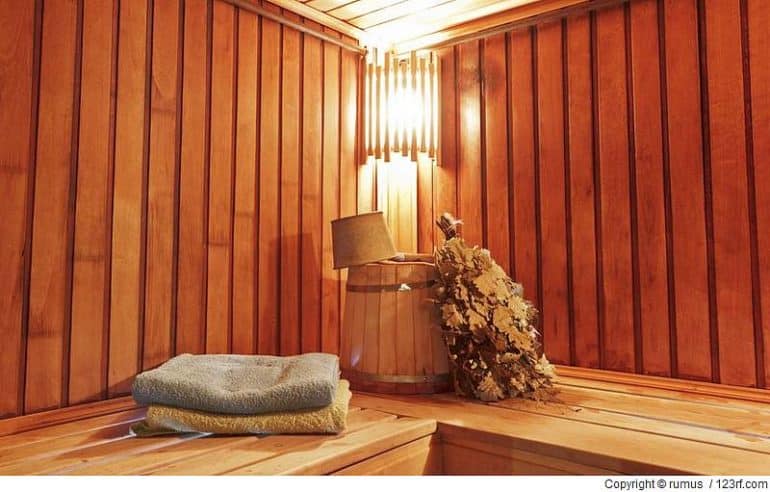How do you recognize mould in the sauna and what should you do about it?
Due to the high humidity in the sauna area, so-called mildew stains occur comparatively frequently. At first glance, it is not always directly visible whether such a stain in the sauna is just an unattractive discoloration or whether there is already a mold infestation. In any case, the mildew stains should be immediately removed professionally and also over a large area. If there is a mold infestation in the interior of the sauna cabin, the sauna should not be used again until this health-relevant problem has been completely eliminated.
Here are some signs by which you can recognize mildew stains on wood:
- Discoloration: mildew stains often cause dark or black spots on the surface of the wood. These stains can be irregularly shaped and vary in size.
- Moisture stains: Mold stains often occur in areas that are damp or poorly ventilated. So pay particular attention to areas that can get damp, such as near windows and doors or in places with a leaky roof.
- Odor: A musty or moldy odor can be an indication of mold stains. This odor is caused by the activity of mold.
- Texture changes: Sometimes mold stains can change the texture of the wood. They may be rough to the touch or have a furry surface.
How can you effectively prevent mildew stains in the sauna and increase its service life?
If you maintain your sauna hygienically on a regular basis and thus keep it clean, you can safely avoid mildew stains in the long run. This does not necessarily require a great deal of effort; regular but effective care of the sauna cabin is already sufficient to prevent annoying mildew stains, with or without mold growth.
However, preventive care of the sauna not only helps against stains, but also naturally increases the service life of a sauna cabin. The high humidity, but also the alternation between hot and cold temperatures, make the inside of a sauna in particular susceptible to the development of stains.
With regular cleaning and disinfection, bacteria or stains don’t stand a chance
In an unkempt state, the sauna cabin thus quite quickly turns into an ideal habitat for harmful molds, bacteria, or other uninvited microorganisms. Stains are then not purely cosmetic, but rather already a health problem. But of course it doesn’t have to come to that.
Some areas are particularly susceptible to stains, and it ultimately depends on how often a sauna is used. Experience has shown that sauna benches and floors need to be cleaned and disinfected most frequently, and preferably after every single sauna session. This takes some effort each time, but pays off in many ways.
Clean sauna stones at regular intervals as well
In the case of sauna ceilings and walls, however, it has been shown that such frequent cleaning is not absolutely necessary. Here, a maintenance procedure every few weeks, depending on the use of the sauna, is sufficient. The sauna stones in the heater and, of course, the heater itself should not be left out of the cleaning process. It is often possible to see at a glance whether cracks are forming, or whether deposits or discolorations are visible. If the degree of soiling has reached a certain level due to staining or deposits on the sauna heater, it may even be necessary to replace the stones.
Fresh air supply, enormously important for removing residual moisture
It also depends on the behavior of the sauna guests themselves that staining can be avoided as far as possible. No one should enter the sauna cabin without first taking an extensive shower, as this can already prevent harmful germs from getting onto the wood. A sauna towel as large as possible as a base ensures during the sauna that no sweat got on the wood, which can also lead to ugly stains.
Sauna slippers can also be cleaned and disinfected regularly, as this reduces the germ load. To avoid staining, a sauna cabin should be aired regularly. Thus, air exchange after a sauna session is important so that the interior of the sauna dries as quickly as possible.
Stain removal only with special cleaning agents
The sauna benches, which are particularly susceptible to stains, should be consistently wiped with a dry, clean and lint-free cloth after each sauna session. Afterward, please use another clean and damp cloth and wipe with it. This prevents discoloration and stains and increases the durability of the wood.
If the wood already shows unattractive discolorations, stains or residues, soft sandpaper or cleaning preparations specially developed for the interior of the sauna are suitable for cleaning. Conventional cleaning agents should not be used under any circumstances, as they could cause lasting damage to the sensitive sauna wood.

